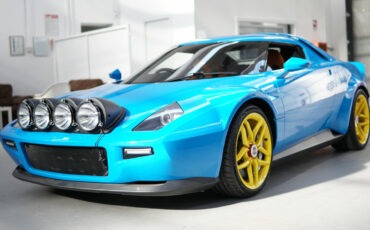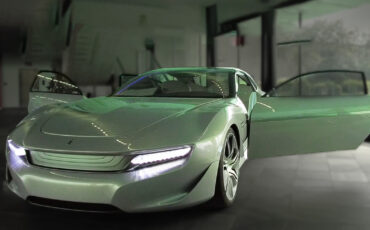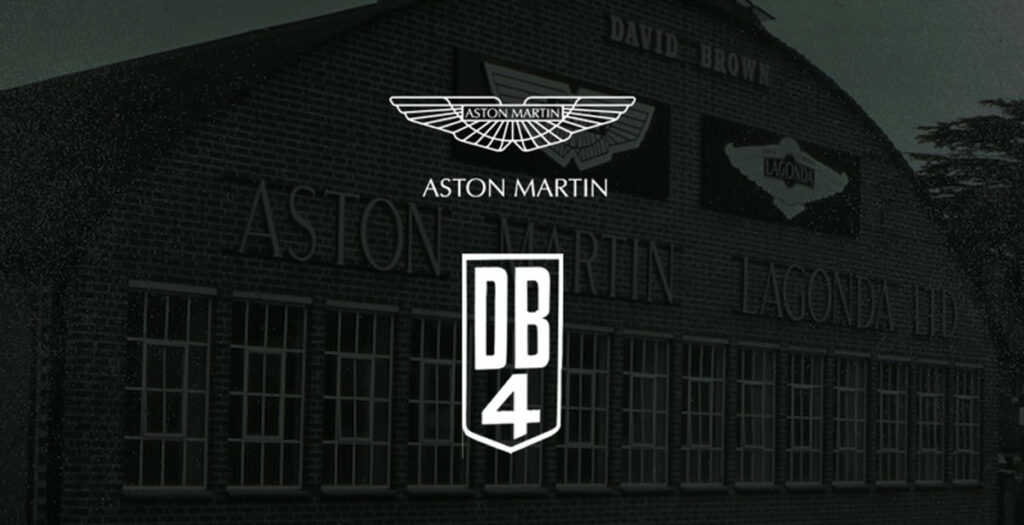
The origin
Aston Martin DB4 GT: how did all started. On 24th May 1914 the driver Lionel Martin, with a Singer 4 cylinders (developed by Robert Bamford) won the British uphill race of Aston Clinton. After the World War, the two joined together in the production of racing cars, which they called “Aston” (in memory of the victorious “Martin” which was the name of the factory’s largest shareholder.
The period between the two wars gave a certain sporting fame to the small factory, which changed owners, but not the name; then a new conflict stopped production, which restarted with difficulty after World War II.
In 1948 “David Brown Gears” took over Aston Martin and, shortly after, also the Lagonda brand. David Brown, the new owner, to mark the new production set-up, used his initials “DB” for each new model.
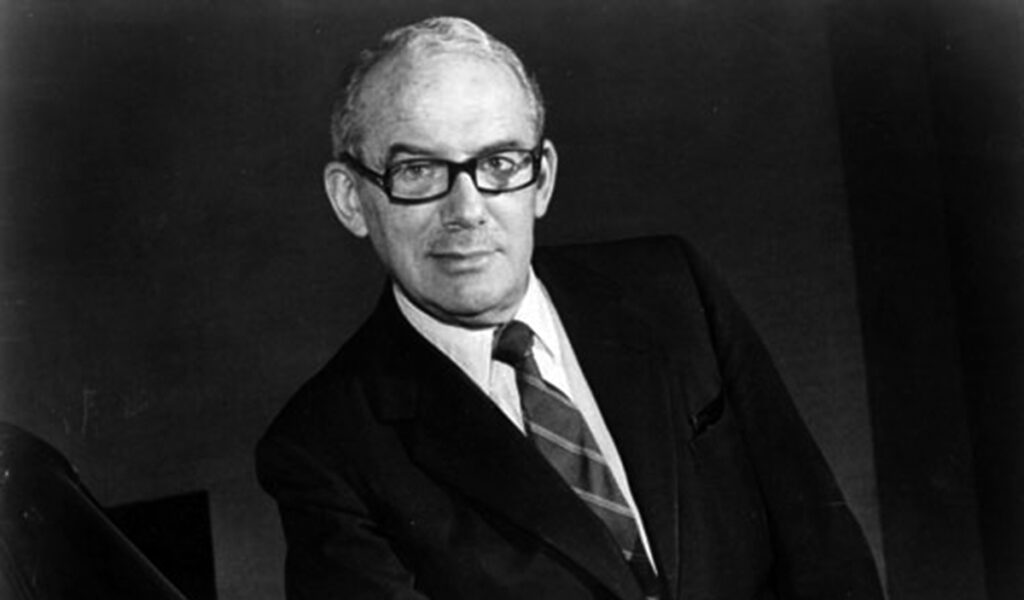
The vocation for racing was not lost: the DB1 and DB2, were joined by the DB3S and DBR 1 which were “barchettas” for endurance races, but Brown admired the Italian coachbuilders and several DB 2 were bodied by Bertone (designed by Scaglione), by Vignale (designed by Michelotti), by Touring (designed by Formenti) and by Ghia with the Supersonic (designed by Savonuzzi).
The Aston Martin DB4 GT
At the end of the Fifties, Aston Martin was a racing and industrial reality: the new GT was unveiled in 1959 and on June it won the 24 Hours of Le Mans with the DBR 1 driven by Roy Salvadori and Carroll Shelby and also the second place with Paul Frère and Maurice Trintignant, There were five Astons in race, but very few noticed a sleek Gran Turismo which remained in the race for only 21 laps. It was the new Aston Martin DB4 GT! This new model was officially built in 101 units but in reality there were only 97: 75 units (0101-0175) were bodied by Touring, another 19 by Zagato (0176-0200), only one by Bertone (the 0201, called Jet), two racing specimens were made in Great Britain by Feltham (0194-0195) and four chassis numbers were never assigned (0192, 0196, 0197, 0198). To all these is to be added a first prototype of Le Mans 1959 identified with the anomalous code “DP 199 – 1”: this body was built directly in Aston Martin itself (in 1953 the company had acquired the english coachbuilder Tickford)
The Aston Martin DB4 GT Touring Superleggera
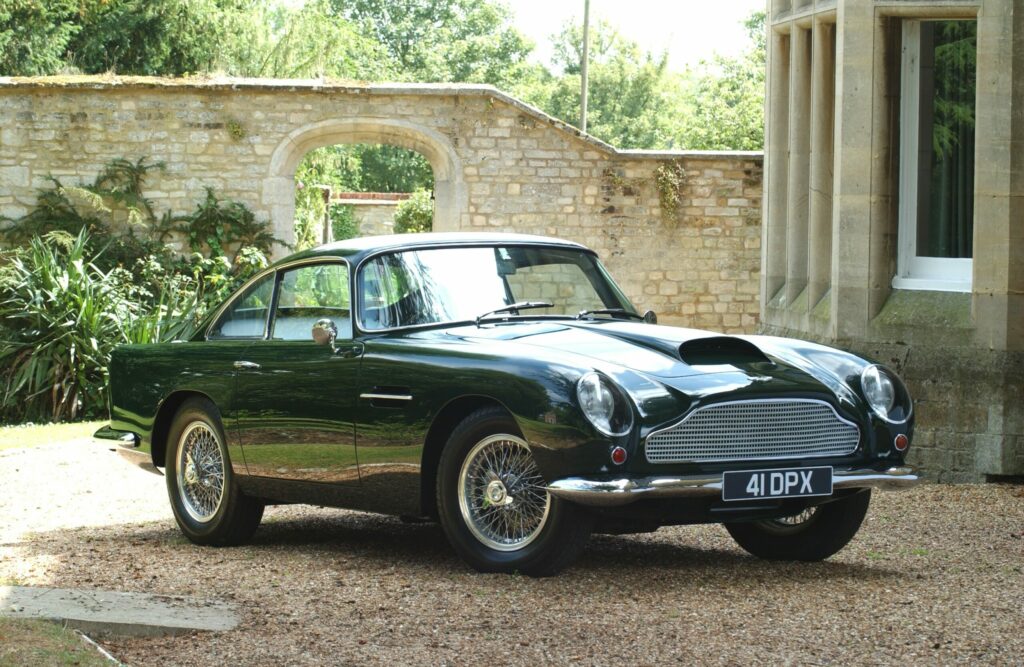
Mr. Harold Beach was sent to Milano to work with Carrozzeria Touring. Their ‘Superleggera’ body construction with alloy panels fixed over a tubular frame demanded a platform chassis, which Beach designed in just six weeks. Touring’s designer Federico Formenti penned a sleek body for the new chassis and two prototypes were built in Milan. Then the craftsmen at Newport Pagnell took over Superleggera body construction for the Aston Martin DB4 GT under license from Touring, who supplied body jigs.
The Aston Martin DB4 GT Zagato
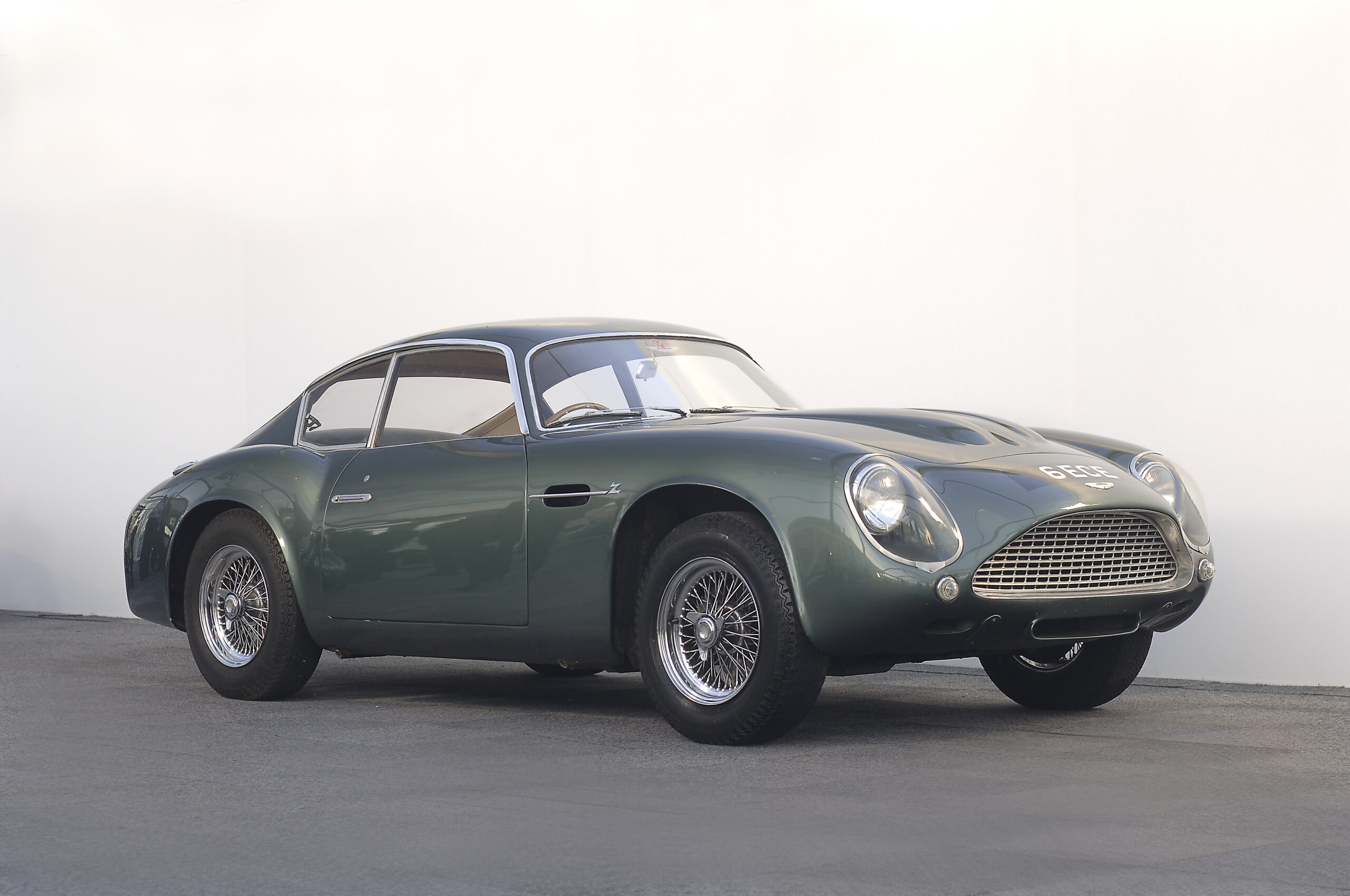
The Aston Martin DB4 GT bodied by Zagato and designed by Ercole Spada, were made between 1960 and 1962 and will be characterized by the suffixes “L-left ‘or’ R-right” to indicate the steering wheel position (left or right).
Eleven right-hand drive chassis were built (0176, 0177,0132 0183, 0184, 0185, 0186, 0189, 0191, 0193 0200) and only eight left-hand drive (0178, 0179 0180 0181, 0187, 0188, 0190, 0199)
Some car historians, referring to the DB4, write about three generations of the model. The DB4 bodied in-house (ex Tickford), the DB4 GT bodied by Touring and the DB4 GT by Zagato. Both Touring and Zagato GT’s were shorter and more compact than the DB4: the wheelbase was reduced by 13 centimeters and thus the length was reduced to 4.35 meters; the weight also dropped from 1310kg of the DB4, to 1270 kg of the GT Touring version and the 1250 kg of the Zagato version. The engine was a 3670cc straight sixm with power peaks of over 300 hp at 6000 rpm. It was equipped with a double ignition and an oil cooler had been added to improve lubrication. The GTs had three Weber 45 DCOE carburetors and Girling disc brakes as standard. The Touring and Zagatos had front headlights built into the bodywork (as it will become standard in the DB 5) and the maximum speeds reached 245 km/h for the Touring version and about 255 km/h for the road Zagato.
The nineteen hand built cars have some differences: in some speciments for example, the front grille is wider; the Z llogo in some is located above the side air intake, in others in front and the air intake. The air intake on the hood, in some cases, is bigger than in others.
In 1963 and 1964, Aston Martin also produced two evolutions of the DB4 GT Zagato: the prototypes DP 212 and DP 215. The two chassis were presented as evolved designs of the GT, similarly to what Ford with the Cobra did, which declared that the Cobra Daytona coupe was an evolution of the roadster.
Here are the racing histories of the most famous chassis
Chassis 0182/R
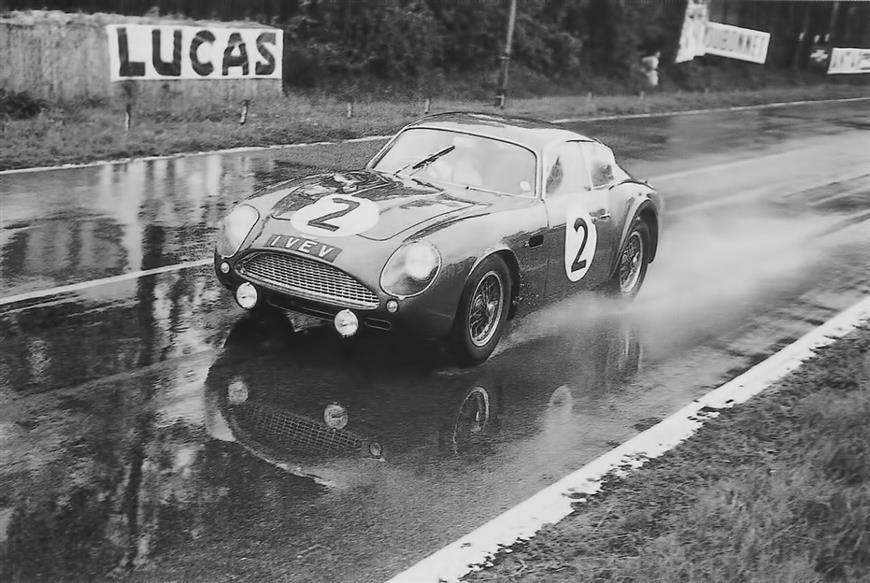
Bought by the English team “Essex Racing” of John Ogier, bright green paint job; it disputed the 24 hours at Le Mans in 1961, but retired, with Roy Salvadori ranking third at Aintree and Goodwood and second with Maggs at the 1000 Km of Monza but was soundly beaten at Monthlery with Clark and Ireland finishing sixth behind the Ferrari GTs.
Chassis 0193/R
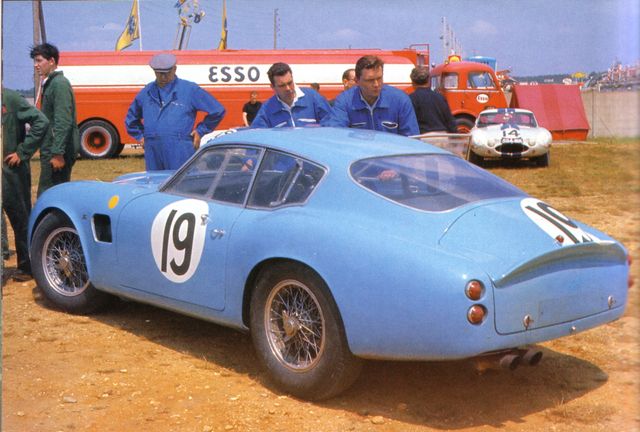
From the Jean Kerguen team “Garage Mirabeau” plate 2475 TTA 75, baby blue color, it is one with the large grille. It disputes Le Mans in 1962 and 1963, but retires in both cases, in 1964, with a rear spoiler and other minor modifications, it won the “Rally della Route du Nord” with Leguéz ec-Franc beating the Ferrari GTOs.
Chassis 0194/R
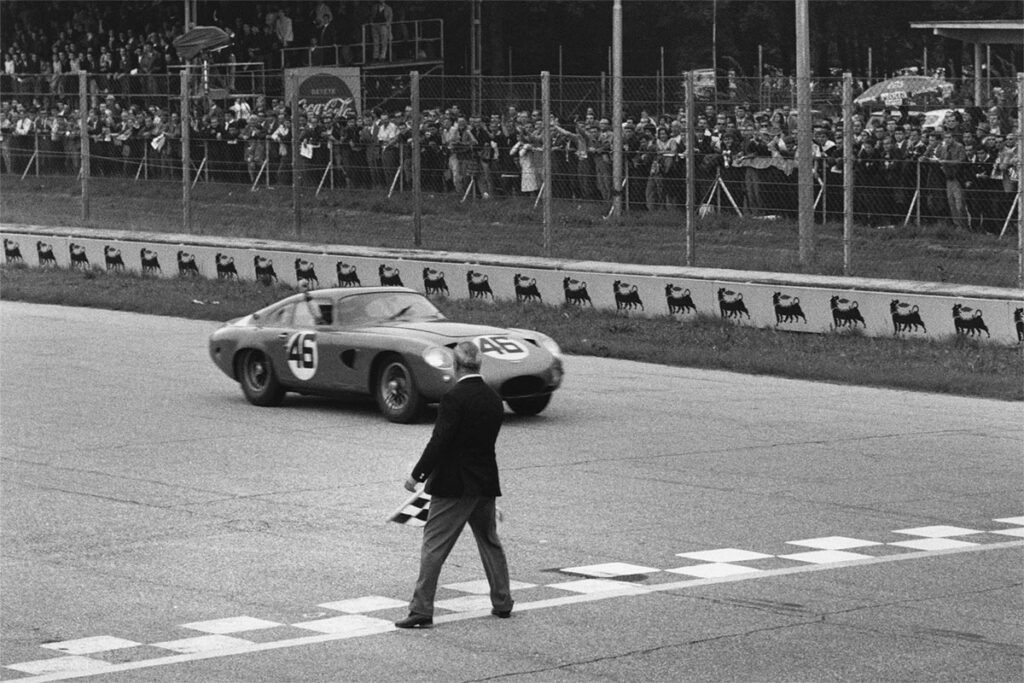
It is the GT (built by Feltham on a Zagato design) from which Aston Martin derived the DP 215 prototype. It disputes the 24 hours of 1963 with Schlesser-Kimberley, but retires; runs at Brands Hatch and at Goodwood with Ireland (sixth and seventh), at the 1000 Km of Monza with Salvadori (first) and at Monthler (1000 Km of Paris) with the French Leguézec (first). In 1964 it repeats, in bad luck, the Le Mans race with Salmon-Sutcliffe (retirement) and its racing career continues (incredibly) until 1974.
Although built in a few examples, the DB 4 GTs had reproductions in 1/43: Vitesse produced a limited series of 7500 pieces (certified and numbered) of the 0182 / R license plate “1 VEV”. Provence Moulage made the 0193 / R resin kit.
The Aston Martin DB4 GT Jet by Bertone
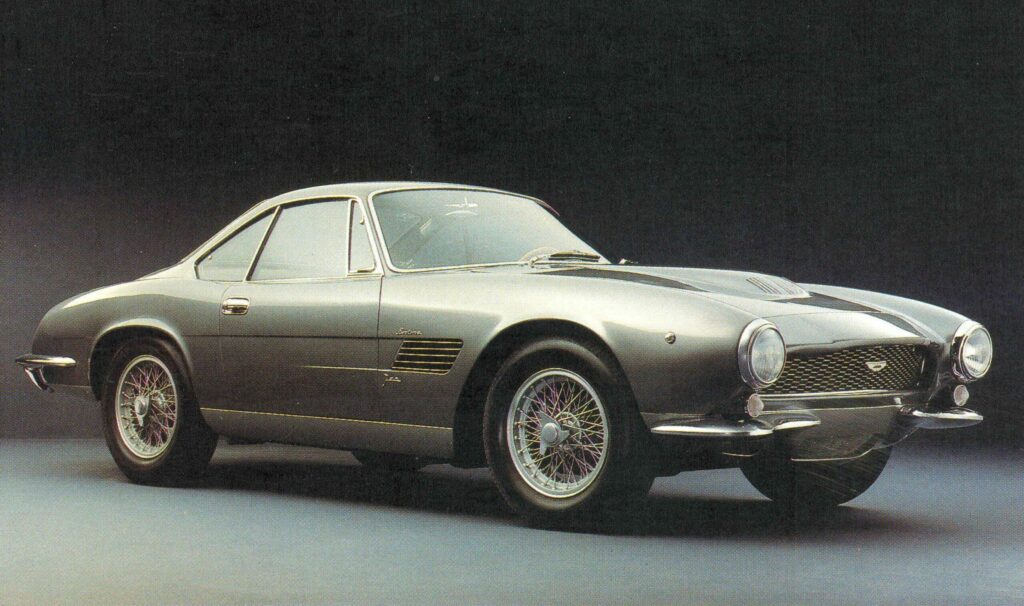
The Aston Martin DB4 GT “Jet” was unveiled by Bertone at the 1961 Geneva Motor Show. Designed by a young Giorgetto Giugiaro it was originally finished in light green and had a grey interior.
According to its most recent auction listing, it was first in Beirut before being sent to the US. It’s there that Victor Gauntlett, Aston Martin’s Chairman found the car in bad shape and sent it back to the UK for a complete restoration by GTC Engineering under Kingsley Riding-Felce’s supervision, it suffered an engine fire. The Aston Martin DB4 GT Jet was purchased by Hans-Peter Weidmann during its restoration which was completed in 1988. Later it was offered for auction at Bonhams’ “The Aston Martin Works Sale” in May 2013 and sold for £3,249,500 inc. premium. The car’s chassis no. is 0201L and engine no. is 370/0201/GT.

